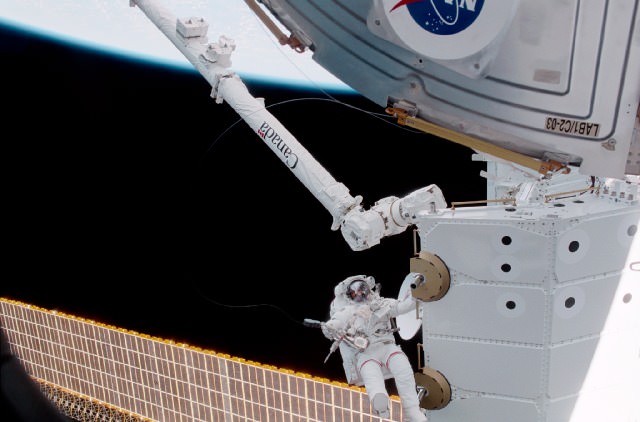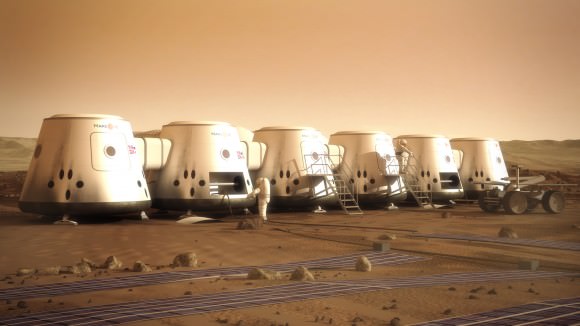

Chris Hadfield during an EVA in 2001. Also in the image is the Canadarm2 robotic arm on the ISS. Credit: NASA
OTTAWA, CANADA – A small Canadian community seems an unlikely spot for an artist now working with Mars One (those people plotting a one-way trip to Mars) and asteroid mining concept company Deep Space Industries. But that’s how Bryan Versteeg got his start in life and — despite his remoteness — found space inspiration from an iconic Canadian technology.
“In a small, isolated Canadian community, I wasn’t really exposed to space exploration at all. I had no one around me who was in the industry. The only thing I had that talked to me about Canadians in space … was the Canadarm,” said Versteeg in a speech Nov. 15.
“So growing up as a kid I’d see this Canadian flag prominently featured on one of the most incredible industrial pieces of machinery put into space,” he added, saying one of his goals now is to “stick the Canadian flag where I can.” Flashing a picture of a futuristic Mars base sporting a flag, he said, “Why not? If this place is going to be built by anyone, it’s built by Canadians.”


Today, Versteeg does artistic work for Deep Space Industries as well as Mars One, work that initially first reached the space community because he put information out on his website and people who were interested in colonization came to him to share ideas, he said.
“I imagine concepts, and I work with people who are trying to develop concepts and show concepts. Although most of the work is self-directed, I worked on 40 projects in the past two years,” he said.
In a sense, he feels that Mars is even easier to communicate with than the far North a few decades ago. When he was living in Inuvik (in Canada’s Northwest Territories) in the 1980s, it would take 2.5 weeks to get a reply from a letter, he said.
Versteeg delivered his remarks at the Canadian Space Society’s annual summit, held this year (Nov. 14 to 15) in Ottawa, Canada.
How can we explore Saturn’s moon, Enceladus, to include its surface and subsurface ocean, with…
Have you ever wondered how astronomers manage to map out the Milky Way when it's…
NASA astronomers have been continuing to monitor the trajectory of asteroid 2024 YR4. The initial…
Some exoplanets have characteristics totally alien to our Solar System. Hot Jupiters are one such…
Stars form in Giant Molecular Clouds (GMCs), vast clouds of mostly hydrogen that can span…
Let’s dive into one of those cosmic curiosities that's bound to blow your mind: how…